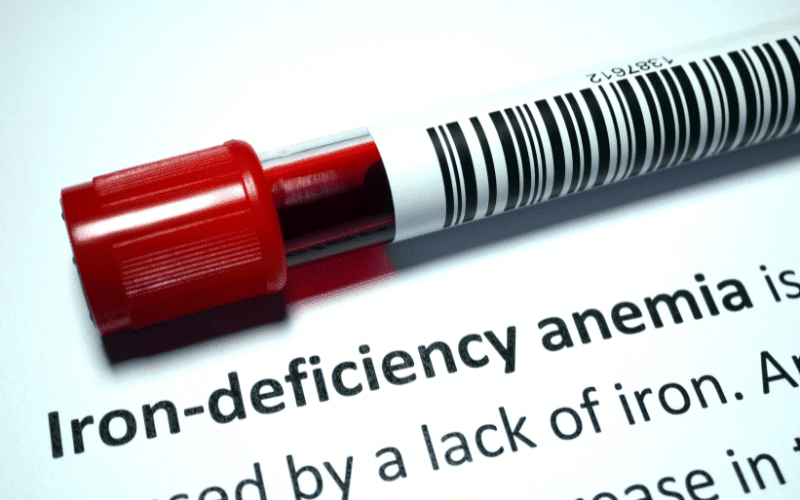Frequently Asked Questions

1. What are the most common causes of iron deficiency anemia?
Iron deficiency anemia is typically caused by inadequate iron intake, poor iron absorption, increased iron requirements (e.g., during pregnancy), or blood loss due to menstruation, injury, or gastrointestinal bleeding.
2. Can iron deficiency anemia be prevented?
Yes, in many cases, iron deficiency anemia can be prevented by maintaining a diet rich in iron, ensuring adequate absorption of iron from food, and addressing any underlying conditions that may cause blood loss or increased iron requirements.
3. How is iron deficiency anemia diagnosed?
Iron deficiency anemia is usually diagnosed through blood tests that measure hemoglobin levels, red blood cell count, and iron levels. Your healthcare provider may also evaluate other factors, such as your medical history, to determine the cause of your anemia.
4. What are the treatment options for iron deficiency anemia?
Treatment for iron deficiency anemia typically includes oral iron supplements, dietary changes to increase iron intake, and addressing any underlying causes, such as blood loss or poor iron absorption.
5. Can iron deficiency anemia cause long-term complications if left untreated?
If left untreated, iron deficiency anemia can lead to complications, such as an enlarged heart, irregular heartbeat, or heart failure. It can also negatively impact your overall quality of life, causing fatigue, weakness, and cognitive difficulties.
Conclusion: Understanding and Addressing the 15 Symptoms of Iron Deficiency Anemia
Iron deficiency anemia (IDA) is a prevalent condition that can significantly impact your health and well-being. By familiarizing yourself with the 15 symptoms discussed in this article, you can better recognize the signs of IDA and seek timely medical intervention. These symptoms include fatigue, weakness, pale skin, dizziness, brittle nails, and shortness of breath, among others.
It’s essential to consult a healthcare professional if you suspect that you have iron deficiency anemia. Accurate diagnosis is crucial, as the treatment plan will depend on the underlying cause of your anemia. Typical treatment options include iron supplementation, dietary modifications to increase iron intake, and addressing any contributing factors, such as blood loss or poor iron absorption.
In addition to understanding the symptoms of IDA, it’s important to be proactive about prevention. This includes maintaining a diet rich in iron, ensuring proper iron absorption, and monitoring any conditions that may increase your risk of developing anemia. By taking these steps, you can significantly reduce your chances of experiencing the debilitating symptoms of iron deficiency anemia and safeguard your overall health.
Remember, knowledge is power. The more you know about the symptoms and causes of iron deficiency anemia, the better equipped you’ll be to take control of your health and lead a vibrant, energetic life.